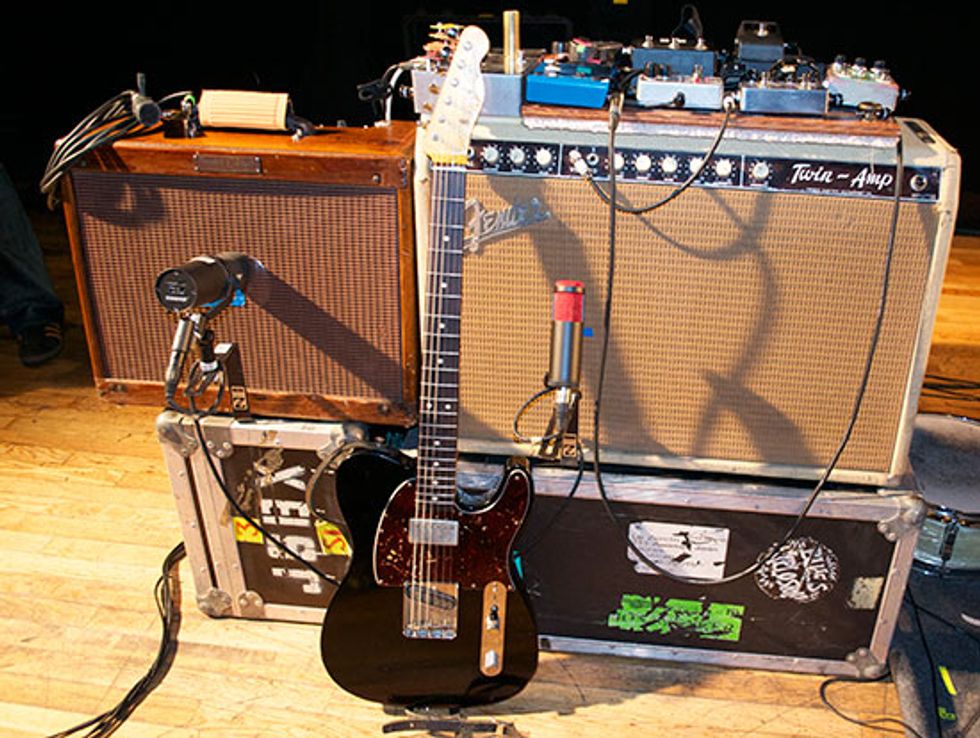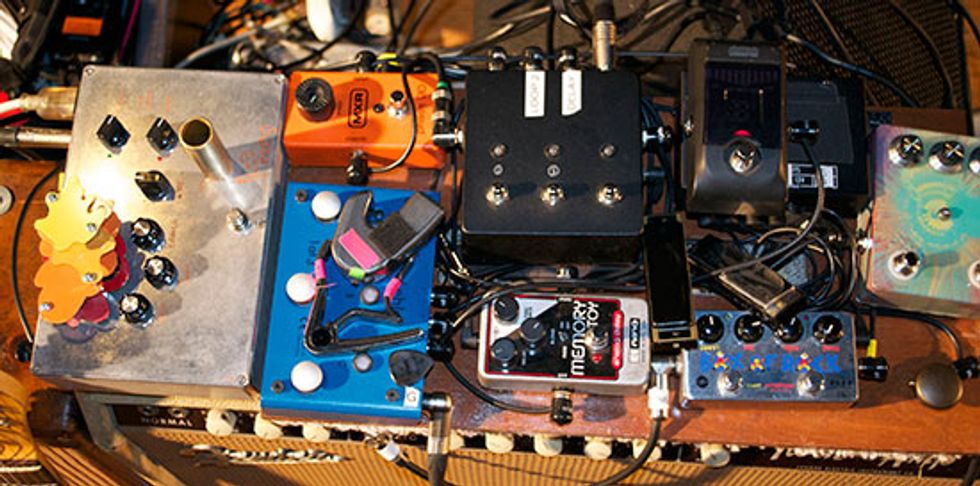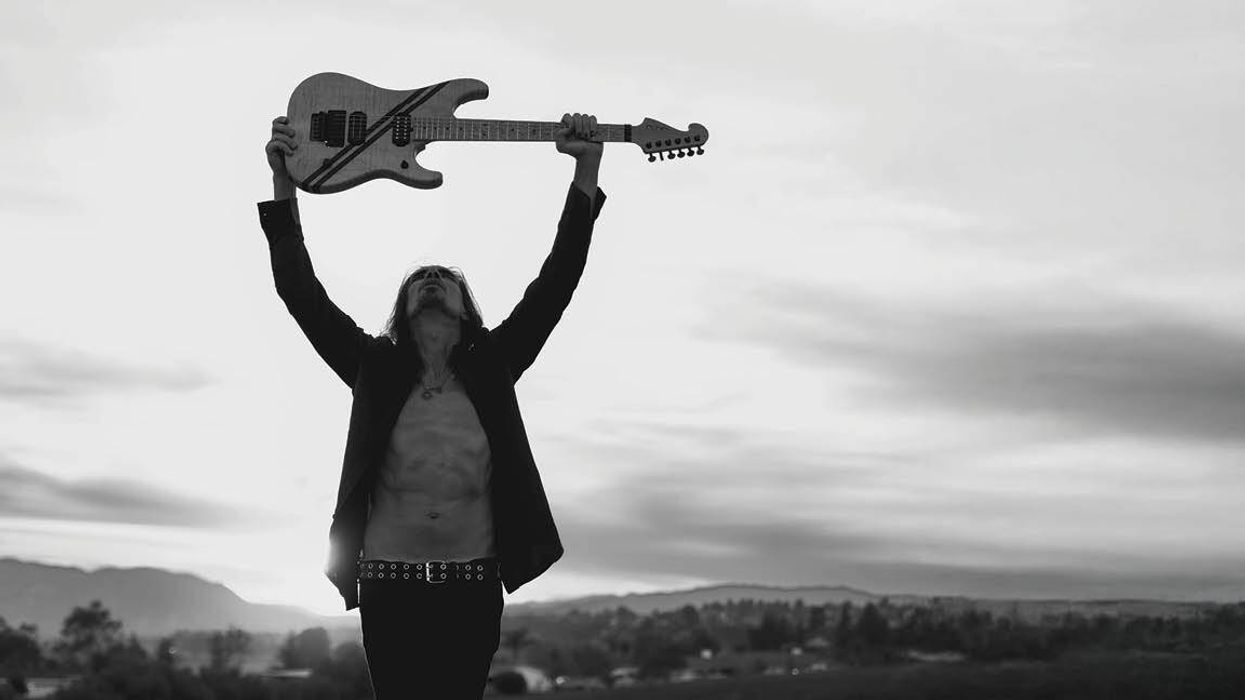PG's Tessa Jeffers is on location at the Bottom Lounge in Chicago, Illinois where she catches up with Jon Spencer Blues Explosion guitarist Judah Bauer. In this segment, Judah details his vintage parts-caster Teles, Fender amps, and array of effects.
Guitars & Amps
Bauer uses Telecasters built from various Fender parts by Norio Imai of Imai Guitars. They source parts to replicate the tone and feel of Bauer's '65 Tele, which he leaves at home, and then Imai refrets and refinishes the instruments. Pictured is his newest model, which has a Seymour Duncan humbucker at the neck. The bridge pickup, like the pickups in his other Imai Teles, is hand-wound by Imai. Other special features include a capacitor in the volume circuit and a hidden kill switch. He uses two of these live, one in standard and one in open G tuning, strung with DR Strings Tite Fit .011 - .050.
Bauer's amps are a stock '61 Fender Twin and a '59 Fender Deluxe with a JBL E120 speaker for more headroom. The amps are run in stereo.
Effects
Bauer's go-to effect is an Audio Kitchen The Big Trees, a tube drive pedal that can also be used as an amp. He also has a Z.Vex Box of Rock that he uses for dirt when the Big Trees pedal is too big to travel with. He tries to keep it simple with just a Lehle 1at3 switcher, a delay pedal for short delays (the multicolored unit on the far right), an EHX Memory Toy for wilder delays, and an MXR Phase 90 which he uses for fuzz. He has a custom Audio Kitchen switcher that allows him to use modified vintage Fender footswitches to trigger his effects. He uses the Ebow on "Bear Trap," and combines it with a slide for siren-type sounds.









![Rig Rundown: Russian Circles’ Mike Sullivan [2025]](https://www.premierguitar.com/media-library/youtube.jpg?id=62303631&width=1245&height=700&quality=70&coordinates=0%2C0%2C0%2C0)

















